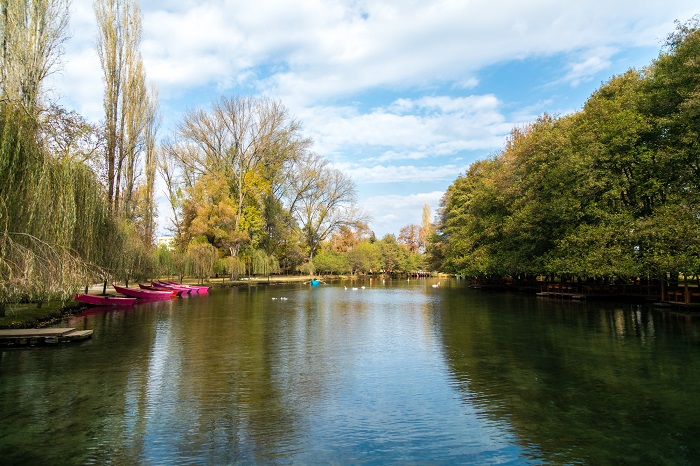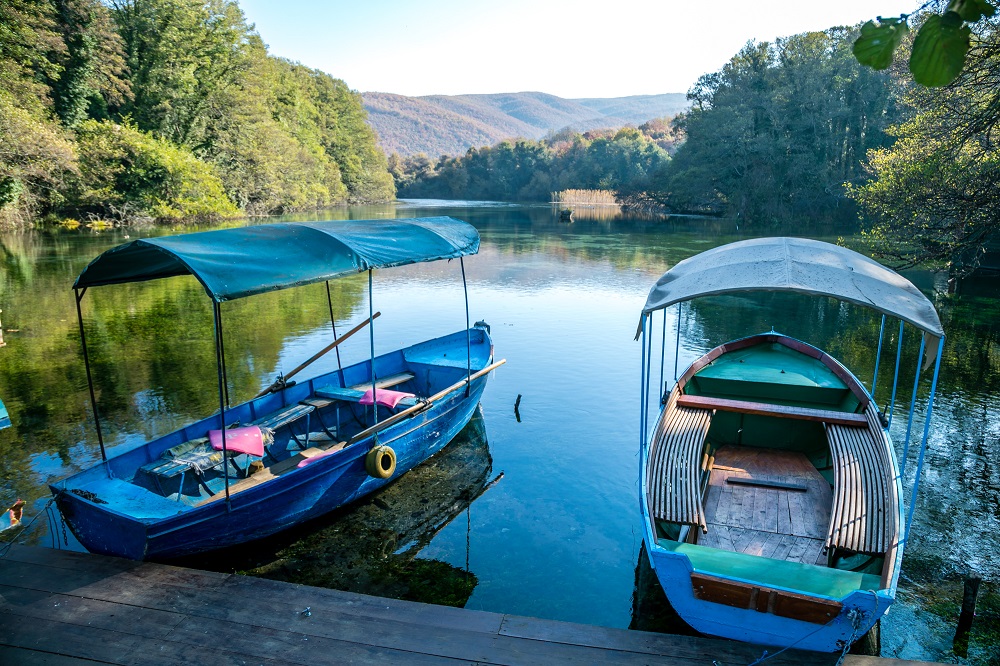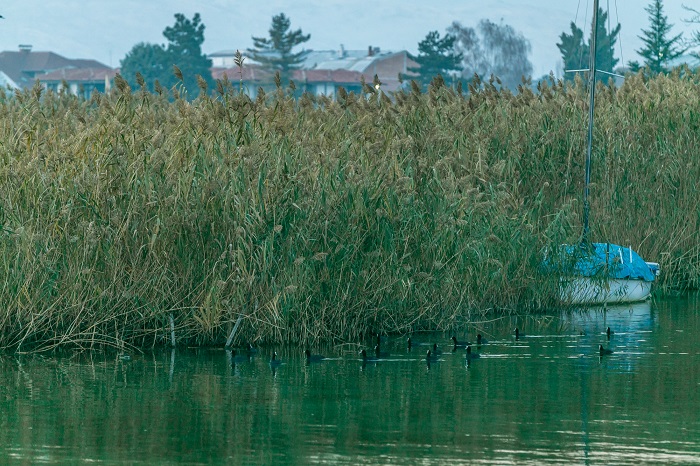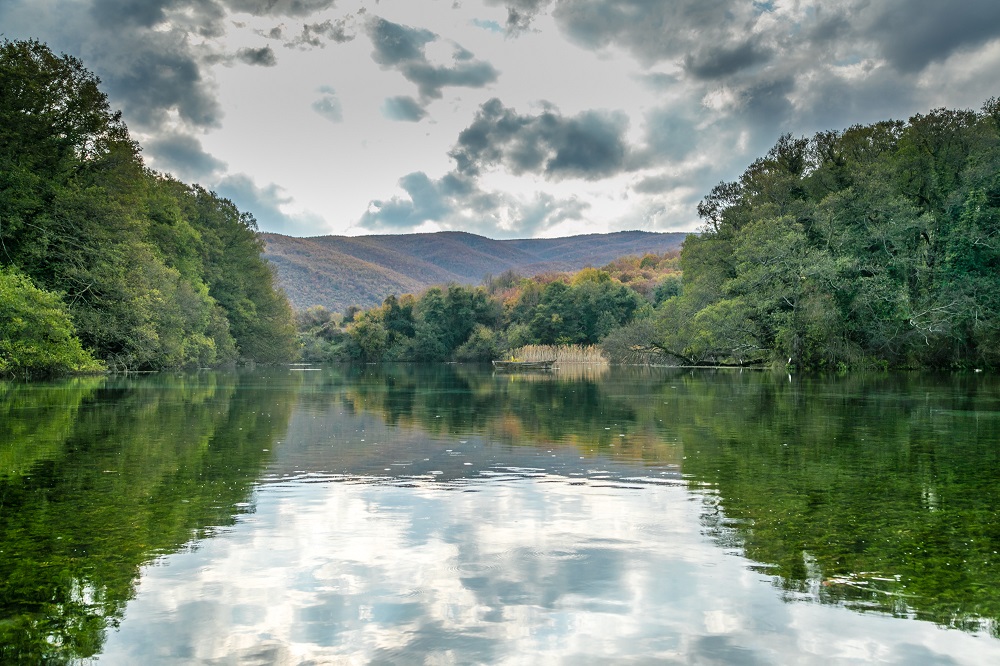The Nexus approach
The Nexus approach stems from the realization that water, energy, agriculture and natural ecosystems exhibit strong interlinkages. Under a traditional sectoral approach, each sector plans and manages the use of resources without necessarily taking into account related considerations from other sectors. The Nexus approach is essentially about moving beyond the traditional sectoral thinking and adopting an integrated and coordinated approach with a view to reconciling sectoral interests, resolving conflicts by effectively managing trade-offs, and capturing intelligent synergies, while providing opportunities for innovation and enhanced resource efficiency.
This requires a coherent approach in the design and prioritisation of policy options, management practices and infrastructure planning in order to maximise overall benefits across sectors, ensure security in terms of resources, economic prosperity and resilience to climate change impacts.
Watch a short video on the Nexus Approach and the Nexus Assessment in the Drin River basin. The video has subtitles that can be activated by pressing the icon at the bottom right of the You Tube screen.
The Nexus Policy Dialogue process in the Drin river basin
The Nexus Assessment process in the Drin basin was initiated under the GEF-funded “Drin Project”, implemented by UNDP and managed by GWP-Med in cooperation with UNECE. The Transboundary Diagnostic Analysis (TDA) developed in its context included a “Thematic Report” on the Water-Food-Energy-Ecosystems Nexus, prepared in 2018-2019 with co-financing from the Austrian Development Agency under the SEE Nexus Project. The Nexus Thematic Report (essentially the Phase I Nexus Assessment) provided a qualitative analysis on key cross-sectoral issues related to the energy, forestry, and agriculture sectors, following up on the related discussions during the 6th Drin Stakeholders Conference (Ohrid, North Macedonia, 14-15 Nov 2018).
The Phase II Nexus Assessment, developed in the framework of the ADA-funded “SEE Nexus Project”, explored in detail, two key Nexus issues identified during Phase I, namely:
- The interface of hydropower operations and floods risk, and
- Aspects of sustainable biomass and forest management and related interlinkages
The Assessment was developed with feedback and data provided from related stakeholders from the Drin Riparians, using the institutional platform of the Drin Coordinated Action process (Drin CORDA) including the Drin Stakeholders Conferences and the related Expert Working Groups. The Drin Core Group (DCG), a joint body comprising representatives of Water-related Ministries and Institutions of the Riparians, provided steering and guidance for the development of the Assessment.

The Phase II Nexus Assessment for the Drin basin
1. Hydropower operations and floods risk in the Drin Basin
The Drin Basin presents high risk for floods. On one hand, the Basin is naturally prone to flooding, primarily because of the hydraulic capacity of the Drin River and the limited extension of the floodplains. On the other, the flow regulation practices of hydropower plants (HPPs) along the river can aggravate the risk: The intensity of floods depends on, among other factors, the quantity of water released by the most downstream dam (Vau-i-Dejës HPP), which in turn depends on supply-demand dynamics in the electricity sector (i.e. electricity demand and operation of the dams upstream).
In order to enhance understanding of the physical relations between hydropower operations and flood episodes in the basin and to inform decisions related to the operating rules of HPPs, a quantitative analysis of some of these dynamics was implemented. An integrated water-energy model was developed by researchers from the KTH Royal Institute of Technology, Sweden and the Polytechnic University of Tirana. The integrated model is capable of representing the electricity Systems of the Drin Riparians and in particular the impact of different types of hydropower operations and different types of cooperation on water discharge along the Basin.
Four scenarios were identified and explored with the modelling analysis:
A reference scenario representing the current situation
A “flood-smart” operations scenario investigating the impact on floods downstream from increases in the available buffer volume in the HPP reservoirs.
A climate change scenario assessing potential impacts of drops (by 3% and 6% in 2025 and 2050 respectively) in the average annual precipitation rates in the Basin, on the production by the HPPs in the cascade.
Another scenario investigates the effect that the Skavica HPP, currently under construction in Albania, could have on the electricity generation and import dependency.
1. The key insight from the modelling analysis is that changing the operational rules of the HPPs to accommodate floods has a minimal impact on the security of electricity supply but a potentially significant impact on flood control in the case of small to medium flood events.
Increasing the buffer volume by 20% in the wet season in the Spilje reservoir in North Macedonia provides an additional capacity of about 34 million cubic metres (MCM), and in the Fierza reservoir in Albania by 270 MCM. These buffer increases would lead to average reductions in generation by 2.7% for Spilje and 1.9% for Fierza, or in absolute terms -8 GWh and -34 GWh respectively. Most of these reductions in generation, however, would be offset by increases in the generation of the other 3 large HPPs on the Drin river.
In order to assess the effects on flooded areas downstream resulting from the increased buffer volume in the selected reservoirs, two sets of scenarios were then explored: (i) Floods with a 10-year return period, and (ii) Floods with a 20-year return period, each under (a) the present situation (BAU) and (b) the maximum possible flood control in the reservoirs (increasing buffer volumes by 20%).
The results from the hydraulic modelling and the related flood maps were then used to estimate changes in flood damages downstream. The results indicate that in terms of economic (and human) losses, in the case of the HP-10yrp scenario, damages are significantly reduced compared to the BAU-10yrp scenario. In the case of the HP-20yrp scenario, the damages in Albania could be significantly reduced, while the economic losses in the Montenegrin areas would remain broadly unchanged.
2. A second insight from the modelling analysis is that climatic changes reduce the generation of the HPPs in the Basin to a non-negligible extent. Under the basic assumptions of the analysis, the generation by the North Macedonian HPPs decreases by about 10% by 2030 and 14% by 2050, while for the Albanian cascade, the decrease in average annual precipitation rates results in estimated reductions of 6-8% in 2030 and 7-10% in 2050.
3. Finally, the analysis reveals that the construction of the Skavica HPP will improve Albania’s energy independence, beyond the expected significant benefits in flood mitigation. Due to lack of specific data, including on operational rules, of the Skavica HPP, its effect on reducing flood risk was not assessed – an important aspect to consider in any future work.

Sustainable biomass and forest management in the Drin Basin
The Nexus Assessment Report also includes a chapter[1] that aims to provide a picture of various interdependencies around the value chain of energy biomass and the sustainable management of forests in the Drin River Basin, and to identify potential policy responses.
With a negative balance of 0.5 million m3/year, wood biomass harvest in the Drin basin is directly contributing to forest exploitation and degradation. Biomass (fuelwood) is especially used for space heating, making biomass one of the main sources for fulfilling the energy demand within the Drin Basin. Overexploitation of forests leading to land degradation has a direct negative impact on irrigation, hydropower and other water uses. Erosion and floods can damage infrastructure like irrigation systems, and increase sediment loads in hydropower reservoirs, complicating operations, increasing costs and reducing the lifespan of infrastructure.
Sustainable forest management has a positive impact on soil and water conservation and can reduce flood risks and sediment transport, while also maintaining water quality and availability. Close cooperation between the water and forest sectors at national, regional and transboundary level, is necessary in order to tackle the challenges that forest management is facing today in the region.
The analysis concludes with a set of recommendations that take into account the interlinkages between biomass and the water-land-ecosystem-energy sectors, highlighting ways for the promotion of sustainable management of forests and their products within the Drin Basin.
An appropriate regulative and legislative framework can ensure and monitor the sustainable use of natural resources, embedding river basin management planning and implementation into government structures at national and regional levels for natural resource management but also water and ecosystems management. while also establishing certification schemes (FSC or PEFC) for wood-related products. There is a need to provide forest managers, industries, farmers and all related stakeholders with scientific information including sets of tools that will ensure sustainable management of natural resources, and efficient use of sustainable harvested wood products by households.
In practical terms, measures could be designed to support:
- Forest restoration and Sustainable Forest Management practices,
- Sustainable wood harvest practices for small forest holders,
- SMEs to expand production of processed biomass products (pellets, woodchips, briquettes) for local consumers and related heating and/or combined heat and power systems,
- Investments by consumers for a switch from firewood to processed biomass products.
The Riparians could set up market mechanisms to address specific needs and opportunities. They could also identify options for establishing cooperation with development and commercial banks for the provision of micro-credit options/soft loans for households, businesses and public organisations to shift into alternative heating fuels (e.g. pellets, briquettes) as market-based measures to reduce illegal forest exploitation. Support for biomass production should not, however, compete with agricultural crops nor endanger forest conservation.

Capacity building workshops
In the framework of the SEE Nexus Project, two 2-days workshops were implementing targeting key stakeholders from the Drin Riparians.
On 16 and 17 December 2020, an online workshop was held on the challenges and cross-sectoral benefits of sustainable forest and water management in the Drin basin. Practitioners and decision makers discussed the crucial interlinkages between sustainable forest management and integrated water resources management in addressing environmental and social challenges in the region.
On 6-7 July 2021 a training workshop on the Climate-Land-Energy-Water (CLEWs) modelling framework and its use in the Nexus Assessment of the Drin River Basin was held online. The workshop familiarised participating experts from energy institutions from the Drin Riparians with the CLEWs Nexus methodology, used to quantitatively assess the energy-water interlinkages within the Nexus assessment of the Drin River Basin. By providing an overview of general concepts, tools used and hands-on experience on model building, the workshop opened the box of the modelling analysis to the audience and laid the ground for local uptake of the model infrastructure.
Gender Workshops
Aiming to highlight the importance and relevance of gender dimensions in the sustainable management of natural resources in the Drin basin, two related workshops were held online targeting stakeholders from all Drin Riparians.
On 21 December 2020 an introductory learning workshop on Gender Equality and Sustainable Development took place aiming to familiarise stakeholders from fields related to the Water-Energy-Food-Ecosystems Nexus with the basic concepts of gender equality, as well as the importance of gender mainstreaming in policy making. The Workshop also served as a platform for sharing related insights, exchanging policy-related experiences and identifying entry points and best practices from the Drin basin and beyond.
A follow-up workshop was held on 12 October 2021 bringing together representatives from gender-related institutions and Nexus related sectors, gender focal points, civil society, academia, women empowerment activists and experts, to discuss challenges and opportunities for promoting gender equality as a driver for sustainable development in Drin Riparians.
Key insights from the workshops were captured in this article.
Project Documents for Nexus interventions
Aiming towards more tangible outputs, the SEE Nexus Project also supported the preparation of detailed Project Documents for 2 proposals for Nexus-related interventions:
- Implementation of Nature-Based Solutions for Wastewater Treatment in two Rural Areas in Albania and Kosovo*
- Modern biomass production and use, and sustainable forest management in two pilot areas in Montenegro and North Macedonia
*This designation is without prejudice to positions on status, and is in line with UNSCR 1244/1999 and the ICJ Opinion on the Kosovo declaration of independence.
[1] Based on the Report “Strengthening the value chain of energy biomass in the Drin River Basin for a more sustainable management of forests, and related Nexus implications”, prepared by CNVP for UNECE within the framework of the project.
The Drin river basin was one of the 3 Focus Areas of activities under the “SEE Nexus Project” that was supported by the Austrian Development Agency and implemented (2017-2022) by GWP-Med in partnership with the UNECE. The Project’s other 2 Focus Areas were the Drina basin and Albania, as selected by RCC’s Regional Working Group on Environment.
The Final Outputs of the SEE Nexus Project in the Drin River Basin can be found on the top right hand side of the page.
For more information on related activities, see news items below.
Watch or download the presentations here
(c) 2S Studios
